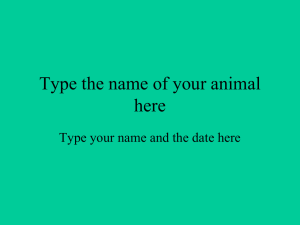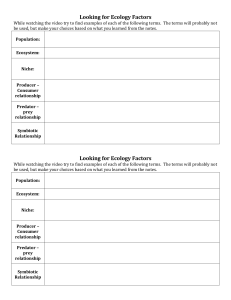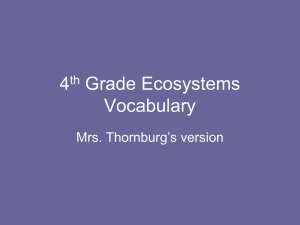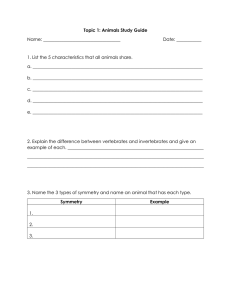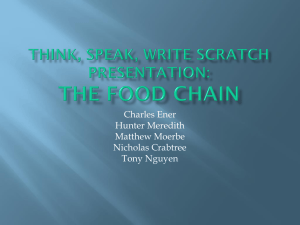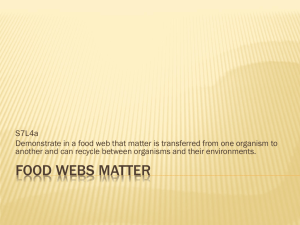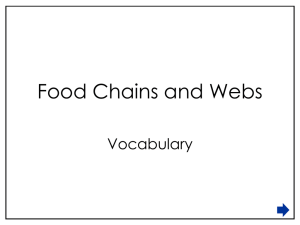Use a model to investigate the impact of changes in a population of
advertisement
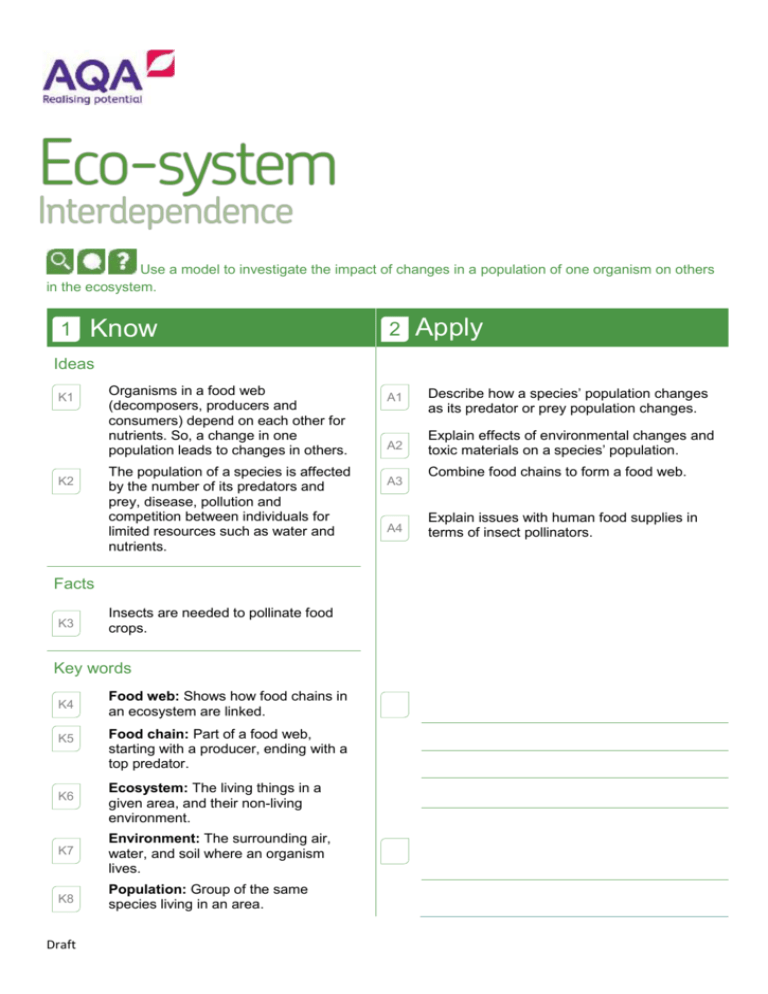
Use a model to investigate the impact of changes in a population of one organism on others in the ecosystem. 1 Know 2 Apply Ideas K1 K2 Organisms in a food web (decomposers, producers and consumers) depend on each other for nutrients. So, a change in one population leads to changes in others. The population of a species is affected by the number of its predators and prey, disease, pollution and competition between individuals for limited resources such as water and nutrients. Facts K3 Insects are needed to pollinate food crops. Key words K4 K5 K6 Food web: Shows how food chains in an ecosystem are linked. Food chain: Part of a food web, starting with a producer, ending with a top predator. Ecosystem: The living things in a given area, and their non-living environment. K7 Environment: The surrounding air, water, and soil where an organism lives. K8 Population: Group of the same species living in an area. Draft A1 Describe how a species’ population changes as its predator or prey population changes. A2 Explain effects of environmental changes and toxic materials on a species’ population. A3 A4 Combine food chains to form a food web. Explain issues with human food supplies in terms of insect pollinators. K9 Producer: Green plant or algae that makes its own food using sunlight. K10 Consumer: Animal that eats other animals or plants. K11 3 E1 E2 E3 Draft Decomposer: Organism that breaks down dead plant and animal material so nutrients can be recycled back to the soil or water. Extend Suggest what might happen when an unfamiliar species is introduced into a food web. Develop an argument about how toxic substances can accumulate in human food. Make a deduction based on data about what caused a change in the population of a species.
